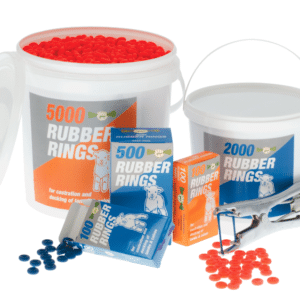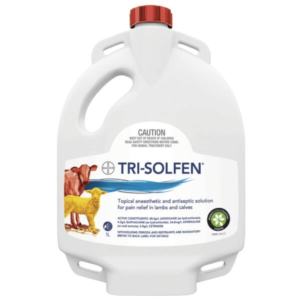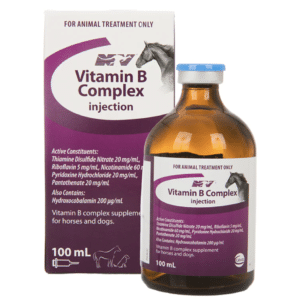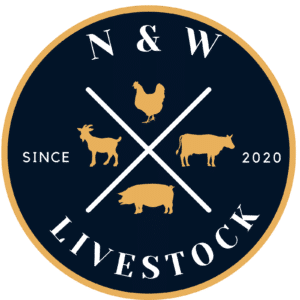What is Marking in Sheep?
Known as marking, this is the process often performed within the first few weeks of life that removes the tail, castration of rams, ear tagging, vaccinations and supplements, this often makes all the difference to their health and wellbeing.
There is a lot of debate as to why you should or should not perform these marking procedures and at the end of the day the motivation for these procedures is animal welfare. The decision should be one that comes from a place of knowledge and experience. That said there are a few things that do need to be considered prior to making the decision.
The first thing to consider is obviously animal welfare. The procedures can often be performed with pain medications and this practise is gaining popularity amongst commercial breeders which is a really positive change.
-

Castration Rubber Rings (Farmhand)
$6.95 – $195.00 Select options This product has multiple variants. The options may be chosen on the product page -

Castration Ring Applicator
$22.50 Add to cart -
Sale!

Tri-Solfen
Rated 5.00 out of 5$249.95 – $3,100.00 Select options This product has multiple variants. The options may be chosen on the product page -
Sale!

Ceva Vitamin B Complex Injection
$25.95Original price was: $25.95.$23.95Current price is: $23.95. Add to cart
What Age?
The time frame in which these procedures are performed changes depending on where you live in the world, therefore the position we take here is for the east coast of Australia.
The older an animal is the more painful a procedure is going to be for them. The reason we tend to mark a little later in life is simply because our lambs and kids aren’t born is sheds as is the case in the UK and US for example where marking is often performed in the first week of life.
In Australia lambs are often born out on pasture and the reality is that lambs can’t be easily collected daily. The practise of mustering at around 4 weeks of age results in all lambs born in this 4 week period are marked at the same time with ages ranging from a week old up to 4 weeks old.
Ear Tagging
In Australia there is a legislative move towards the need to electronically tag sheep for biosecurity traceability so check on the requirements where you are located as this is the time to tag if it is required.
To date, commonly ear tagging has been solely for the management practises on farm, providing each lamb with a unique identification number and a tag colour representing the year of birth. These practises allow for record keeping and breeding programs.
The common hobby farmers tends to not tag sheep however this is likely to change with the new laws being introduced which will result at a minimum a NLIS tags being required which contains the property ID code. (PIC)
Tail Docking, What Length is Best?
Tail docking, the motivation for the process is simply that it prevents poo build up on the tails which then attracts flies. These flies lay eggs in the poo on the tail, maggots hatch and travel to the rectum and result in infestation of maggots internally, which is fatal. The docking of the tail dramatically reduces this likelihood of this issue.
Like everything there is a debate on the length that the tail should be docked and it’s advisable to do your research into what is considered the “standard” for your breed of sheep, this can impact resale value so it is worth researching. Commonly referred to as length being either Short, Medium or Long dock. The position take from most focused on health would advise that the length should cover the anus in males and anus and vulva in female lambs.
Should You Castrate Ram Lambs?
Castration is something that people need to give serious consideration too, there are a few reasons why it is and is not performed.
The first things we talk about is what you are raising the lamb for, if it’s for meat consumption then there are very different markets for meat, some call for intact rams claiming the taste is better, the other requires the complete opposite and they don’t want to touch a lamb that is intact so castration is advised.
There are theories that suggest leaving a lamb intact will promote a healthier and stronger lamb as the testosterone promotes muscle growth, there are others that say the difference is so minimal that it’s not worth dealing with rams that can reproduce as early as 3-4 month old so they recommend castration.
Consider that if you are going to leave lambs intact, they are going to require separation from the ewes so it really depends on the setup you have. In terms of inbreeding, the issue isn’t so much with mother and son, or father and daughter it’s more so brother and sister that the issues can arise. These issues are likely to result in stillborn lambs but can also result in deformities.
Mulesing An Outdated Practise
Mulesing is a procedure used on Merinos and alike because of their wrinkles and folds of their skin. Mulesing is the process of removing these folds of skin from the tail area of a sheep, intended to reduce flystrike, but globally considered to be painful and traumatising for sheep.
Still commonly performed in Australia, however there is a growing trend to stop this procedure. We have taken the position to not perform this procedure when requested to do so.
Supplements
Marking is a stressful time for lambs with an increased risk of fatalities, as a result it’s advised to offer a booster shot of B12 or B-Complex at the time of marking to help boost the lambs resistance to the stress.
Vitamin B Complex is a high-potency injectable used to provide treatment for multiple B-complex deficiencies in cattle, sheep and swine in addition to providing supplemental nutritional vitamins.
Vitamin B12 deficiency in sheep and lambs can cause a number of clinical signs including loss of appetite, decreased birth rates, weight loss, watery ocular discharge and anaemia.
For Lambs it’s recommended to offer a B complex shot every 2 months.
Drenching and Vaccinations
Vaccinations and drenching is something that should be discussed with your local vet or livestock advisor as to if it’s something that is required in your area. Typically it is advised that at least a vaccination against the 5 clostridial diseases be offered and serious consideration be given for the vaccination of CLA or Cheesy Gland.
Clostridial diseases are caused by anaerobic bacteria that are widespread in the environment, particularly in soil, and are often fatal. The bacteria produce spores that can survive in the environment for a very long time.
Clostridial diseases include:
- tetanus
- blackleg
- black disease
- malignant oedema
- pulpy kidney
- botulism
Conditions when clostridial diseases are likely to occur are in non-vaccinated animals.
tetanus – penetrating wounds (including marking wounds), foot trimming wounds, dog bites, grass seed punctures and dehorning
blackleg – muscle bruising, especially in growing animals
black disease – liver fluke infection
malignant oedema – wounds, especially in females associated with recent birthing
pulpy kidney – lush pastures, heavy grain feeding and a sudden change in feeding
botulism – cattle grazing land deficient in protein and phosphorous without adequate supplementation. Phosphorus deficiency leads to bone chewing, which is commonly associated with botulism in unvaccinated cattle.
In terms of drenching it is advised to run a faecal test to better understand the parasite problem you may or may not have on your property and treat accordingly. To learn more about managing parasites click here.




